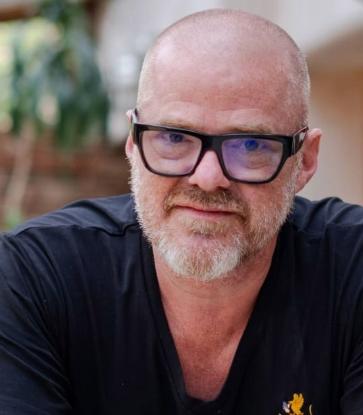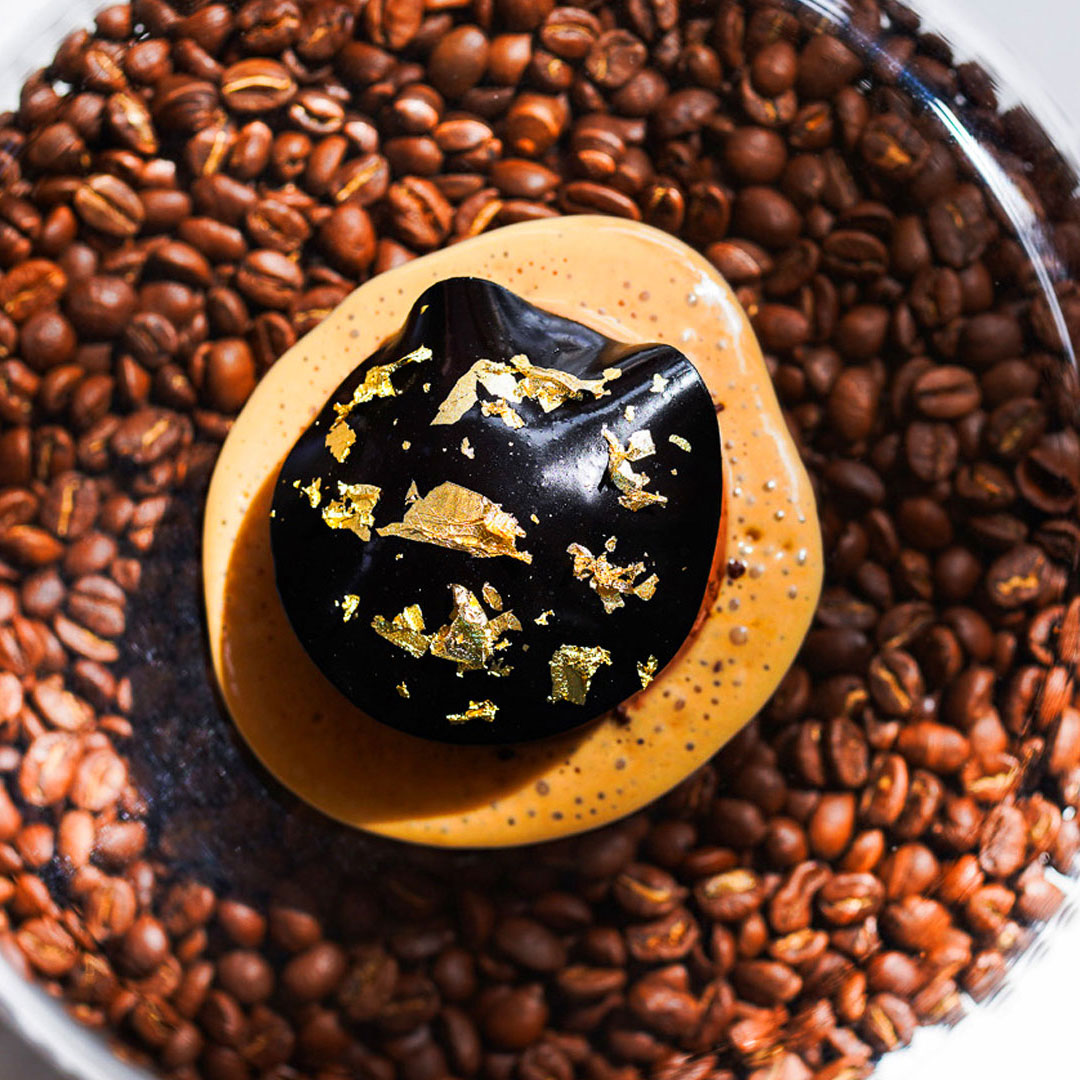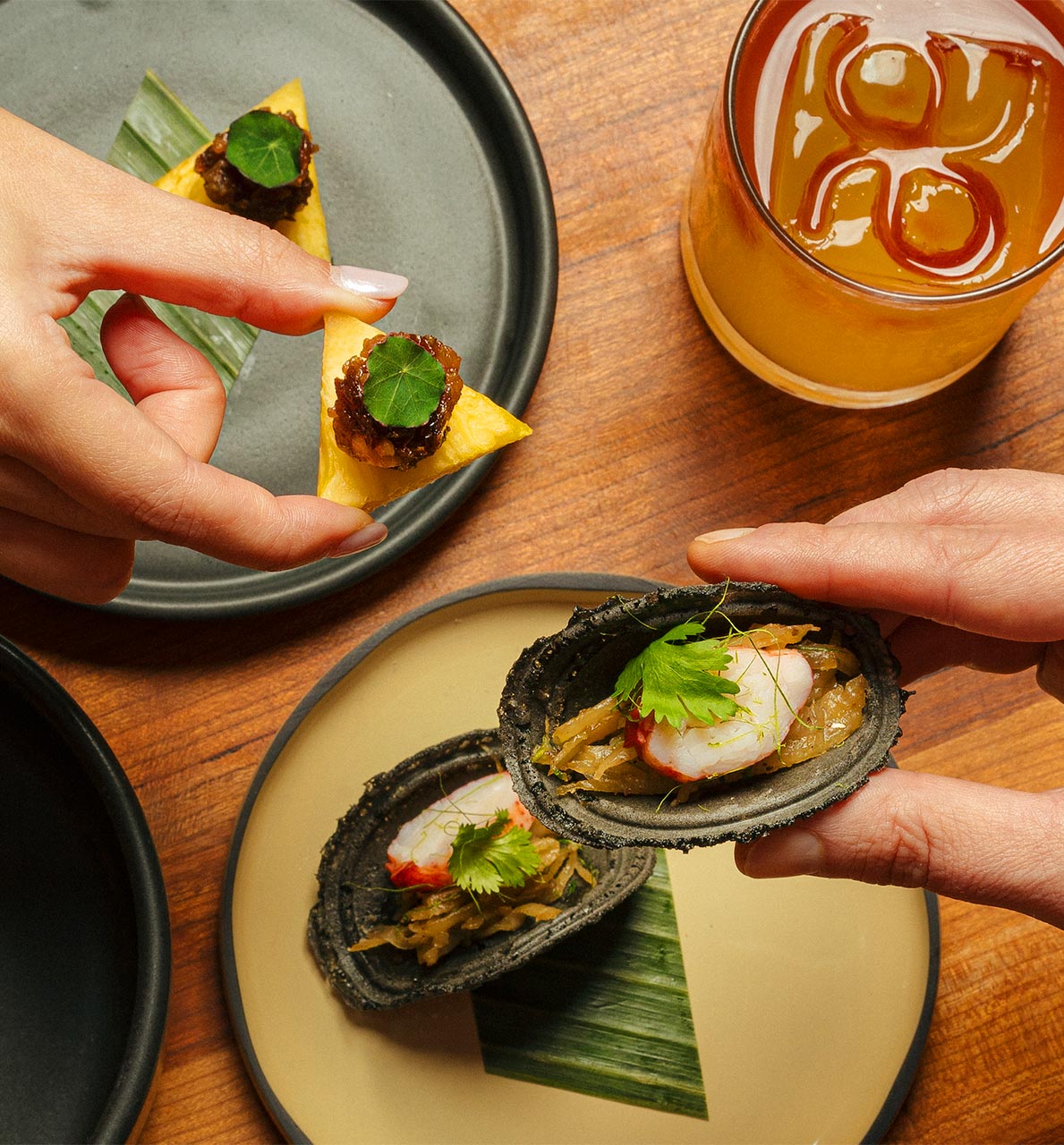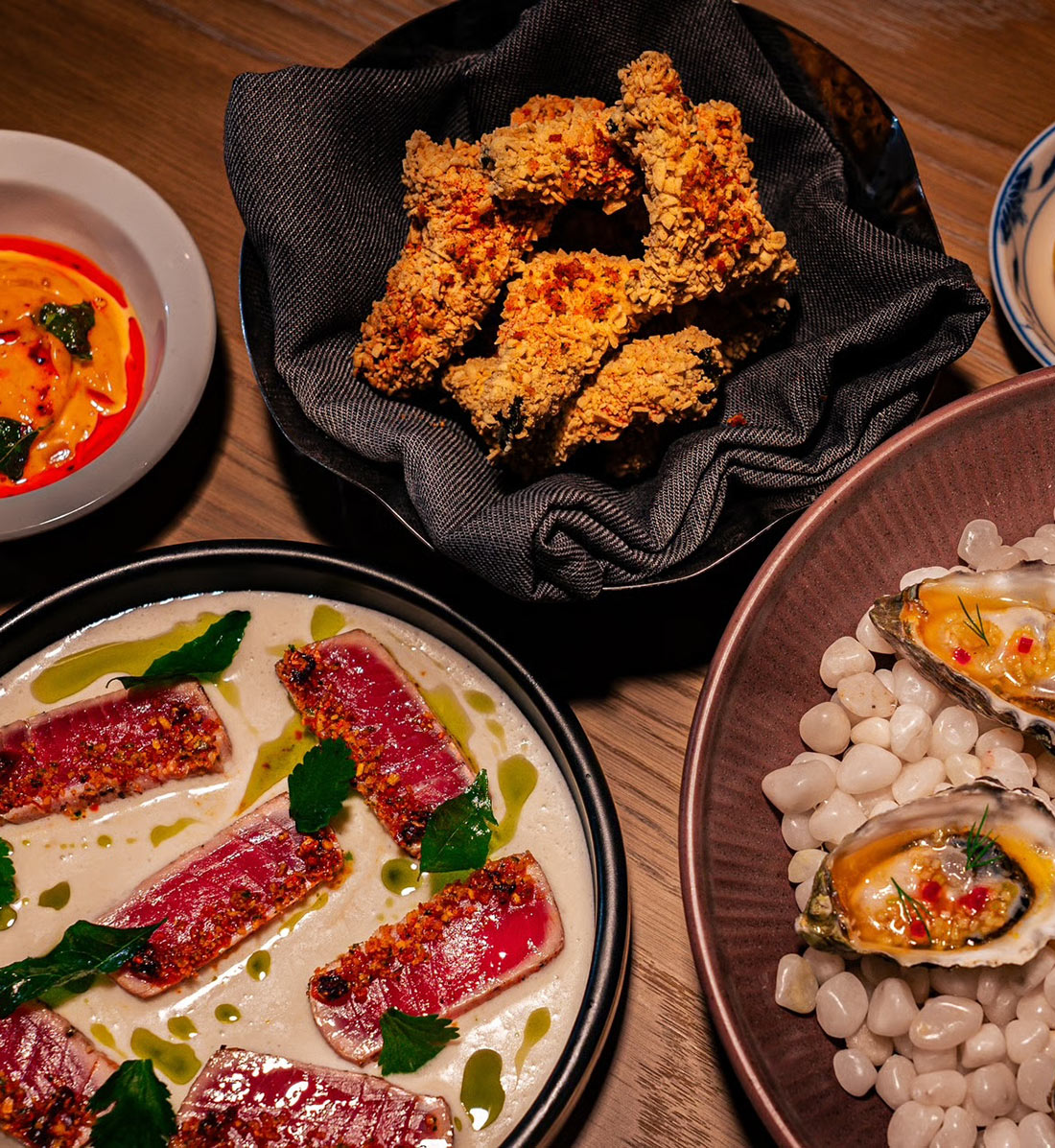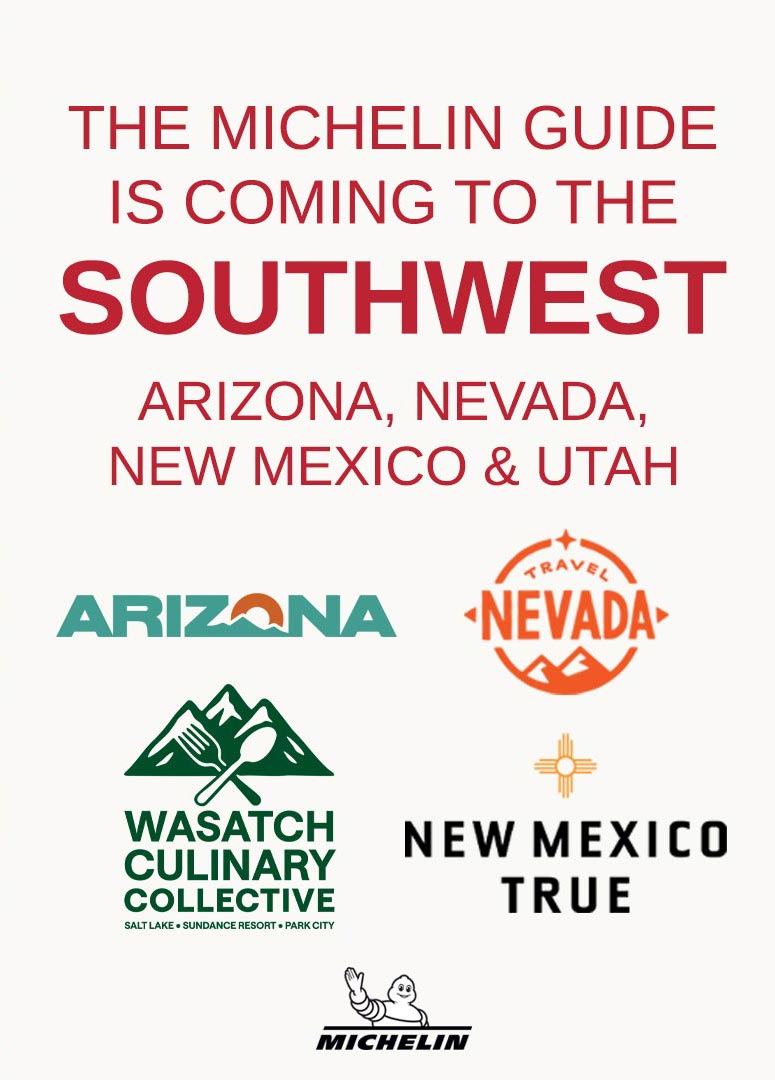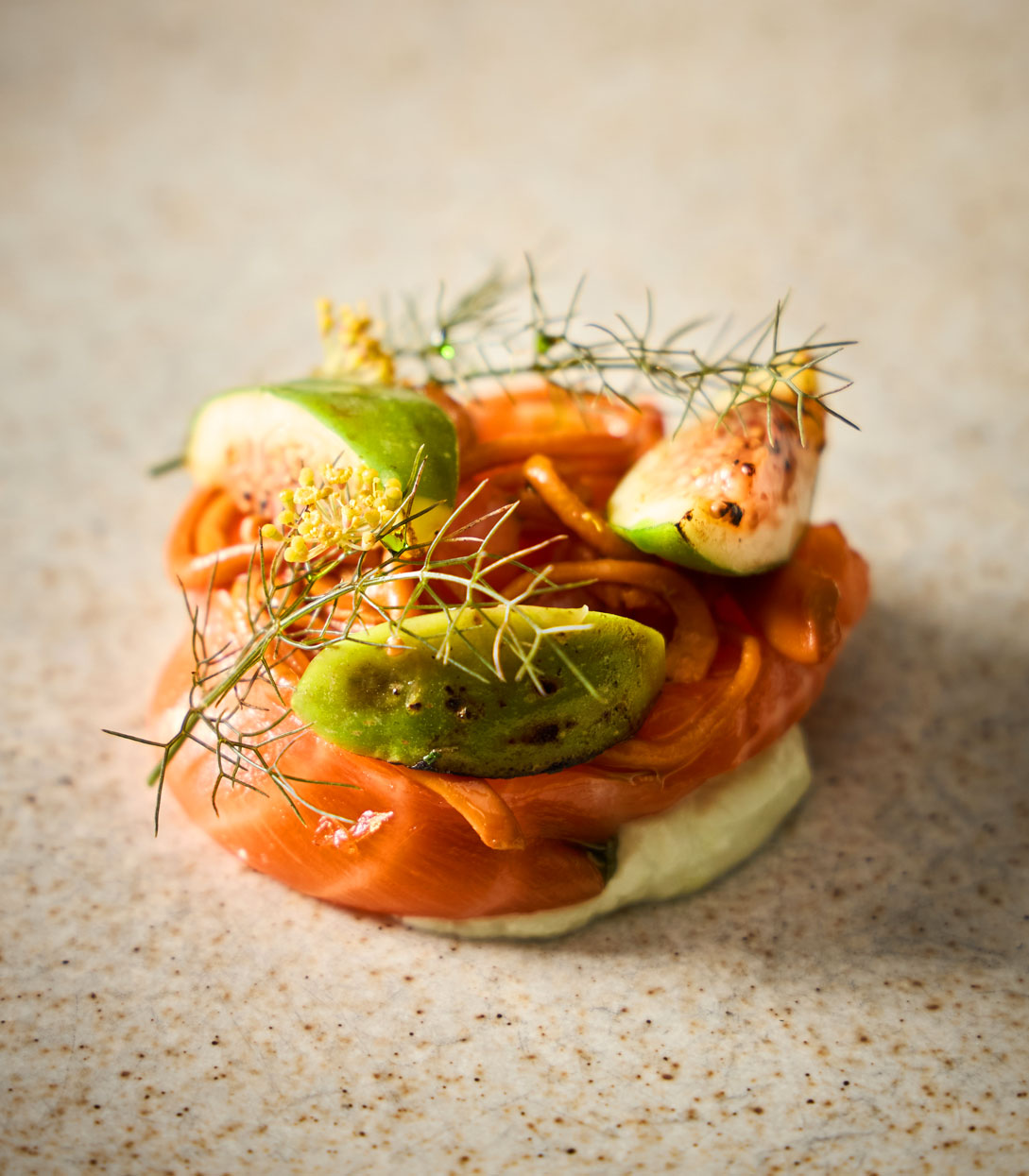When Chef Juan Camilo Quintero moved from Colombia to Chianti in 2016, he sought a kitchen where he could infuse his Latin background with Tuscany’s regional culinary traditions. Though he began at a restaurant within a winery in Chianti, his name swiftly spread among the region and Borgo San Felice recruited him to join their team.
Nestled into a medieval village (borgo) and encircled by 345 acres of vineyards, the Relais & Chateaux boutique hotel is home to a number of culinary concepts, which Chef Quintero oversees. While he’s attentive to satiating guests from the sprawling breakfast buffet and room service to the comfort restaurant and grill that is Osteria Grigio, Quintero found his creative home at Poggio Rosso, the onsite MICHELIN One Star restaurant that also holds a Green Star recognizing the restaurant’s sustainability efforts.
“Poggio Rosso is our fine dining proposal offering creative cuisine based on local, Tuscan products with a little influence of my Latin American story; it’s more exotic than other restaurants around here,” says chef Quintero.

The young Colombian chef runs three tasting menus at Poggio Rosso, from four-to-eight-courses, that were meticulously created to showcase a balance of regional culinary history and cultural tradition with Quintero’s inspiring innovation. “The expectation from diners is to see the best of Tuscany on their plate, and so it’s weird to find Latin cuisine here. It took some time to find the good balance between both,” says Quintero.
Speaking of balance, Quintero adds that Poggio Rosso follows old world techniques to allow the fusion of comfort food and fine dining, which he believes aren't separate entities—“they can go together,” he says. Perhaps Quintero’s two best examples of this are his Riso del Chianti, an edible depiction of Chianti’s landscape that combines the three most prominent elements of wild boar, olives, and cyprus trees. The short grain rice is slowly stewed in the wild boar stock before a mantecatura (meaning to turn into a creamy texture with butter and cheese) then plated as the top layer over wild boar pâté, olive cream, and topped with shavings from the cyprus tree fruit that impart a distinct eucalyptus flavor. There’s also his appetizer that’s a riff on Panforte; rather than the Siena style of dense, sweet spice cake, Quintero transforms the flavors into a savory chicken liver pâté. “As a chef, we have the big responsibility of inspiring younger generations using creativity,” he says about the now iconic dishes at Poggio Rosso.

Below, Chef Quintero discusses another responsibility he doesn’t take lightly—sustainability—and how he works to achieve less waste and more awareness of green practices across the industry, as well as more about infusing Tuscan cuisine with Colombian flare.

Sign up, make a list of your favorites, and make a reservation with our booking partners Resy, OpenTable, and Seven Rooms.
What is the most challenging part about combining the flavors of Colombia with Tuscany? How do you overcome that?
Thinking global and acting local. As a chef, my first goal is to create delicious dishes. Every chef has an idea about how to reach that goal. Our recipes are a mixture, some are inspired by the local ingredients and Tuscan traditions, because they need to be maintained, they need to be alive. On the other hand, as a foreigner, I have memories related to flavors and dishes from Latin America where I lived for many years. Due to that, I am almost unconscious of the desire of mixing the richness of the local ingredients and techniques and pairings from abroad. I believe that the key is to cook following your intuition and your heart.
What is a dish that exhibits this balance?
Gnocchi with nixtamalized Tuscan corn and coconut oysters sauce. Gnocchi is an Italian recipe but we make them with corn instead of potatoes. The corn is cooked as indigenous Mexican-Andeans used to do thousands of years ago. However, we used organic corn cultivated in Tuscany, very close to our restaurant, to support the local productions.
The sauce is made with amazing sea products that we get from our artisanal-fisherman supplier, stewed in a coconut milk sauce, as Colombian people make in the pacific coast.
Tell me about the restaurant’s sustainability pillars. What does it mean to you to have a Green Michelin Star?
I'm a chef, but also a Gastronomist from Slow Food University in Pollenzo, Italy, which means that I studied food from a very ethical point of view. It’s fantastic that many chefs are committed to more sustainable restaurants. Our pillars are—Social Agriculture: Because our vegetable and herb gardens are managed by people with disabilities, we offer a fully paid opportunity to work in organic agriculture for our restaurants. Zero food waste: We reduce a lot of our waste by composting, optimizing all the parts of vegetables and foods. Clean energy sources: Green energy sources for heating and equipment functioning such as sun energy.
How do you prioritize the message of sustainability in your cuisine to guests without making it feel forced?
Our approach for sustainable cooking has been very natural. It doesn’t belong to a trend. Our hotel is in the countryside, in the middle of nature, that gives us the opportunity to grow vegetables that our customers can taste, and this is the best way to connect people with our environment.
Do you think sustainability carries a stigma both in travel and cuisine? If so, how do you challenge this or how do you manage expectations around it?
Sustainability is a very complex term. I think it’s a mistake to pretend to change suddenly our food systems, because there are so many people living on the planet, and we are inside a huge network of production, distribution and consumption habits regarding restaurants and the travel industry. It will take time to find a new balance. However, I consider it a great achievement that chefs are adopting more ethical practices and understanding the role that they are playing.
What are some of the little adjustments you’ve made over time that follow this gradual change? How have you seen the impact?
Rethinking our recipes in order to adapt them to seasonality. Using less red meat and products with high carbon dioxide impact. Trying to support small producers instead of huge distribution-logistics companies. Putting nutrition and health in the center of our research, because our food has to be tasty and delicious but also healthy. Changing the way we get commodities, because we can’t grow cacao and coffee in Europe or the United States, but we have the ethical responsibility to get chocolate, coffee and similar products with the same criteria we do here. Fair trade, ecological approach and rural development. Investing in agriculture, such as our garden. Investing in recycling, trash management, and compost. Teaching these ideas in our cooking class lessons; education is a very powerful tool.
Can you share more about how the onsite “Happy Garden” furthers your priority of sustainability?
Our Happy Garden is an initiative that gives a fully paid job to people with disabilities, transforming their lives through agriculture and farming. We believe that sustainability is not only ecological and environmental, it is also social, because as humans, all our activities have an impact in people's lives. If we are able to change someone’s life in a positive way, then we [moving] are in the right direction.
What do you grow onsite? Where is the furthest ingredient you use sourced from?
We grow vegetables such as different varieties of tomatoes, lettuces, eggplants, peppers, zucchini, artichokes, fennel, and Tuscan kale. Also, herbs like mint, thyme, rosemary, sage, tarragon, oregano, balm mint, lavender. The furthest ingredient comes from Colombia; I get the chocolate there, because it is impossible to produce cacao in Europe. We are very proud to collaborate with Cordillera, a sustainable Chocolate brand.
How else do you champion sustainability in your cuisine?
I’m working very hard in the construction of an education network against food waste. For me the best impact that the restaurant and hotel industry can really afford is reducing food waste. It’s a paradox that the planet produces food for more people than we actually are, and at the same time there is hunger and need in many houses. We use every single product in order to optimize its purchase. It means that all the vegetables' skins go to the compost to fertilize the garden. All the herbs and greens that are not fresh anymore are dried to create our signature aromatized salts. The leftovers of our staff meals, still in good condition, are given to families in need that can appreciate this to feed their families. We produce kombuchas out of the fruits that can be a little soft and people don’t want to consume them at the breakfast buffet.
Outside of work, how do you commit to sustainability?
I recycle at home. I buy wines and foods from small farmers instead of industrial products from supermarkets. I have a little garden to cultivate organic tomatoes and lettuce. I only buy seasonal products. I try to avoid plastic, and like to buy vintage clothes against the culture of consumption without limit.

Hero image: Courtesy of Hotel Borgo San Felice
All photos courtesy of Hotel Borgo San Felice









